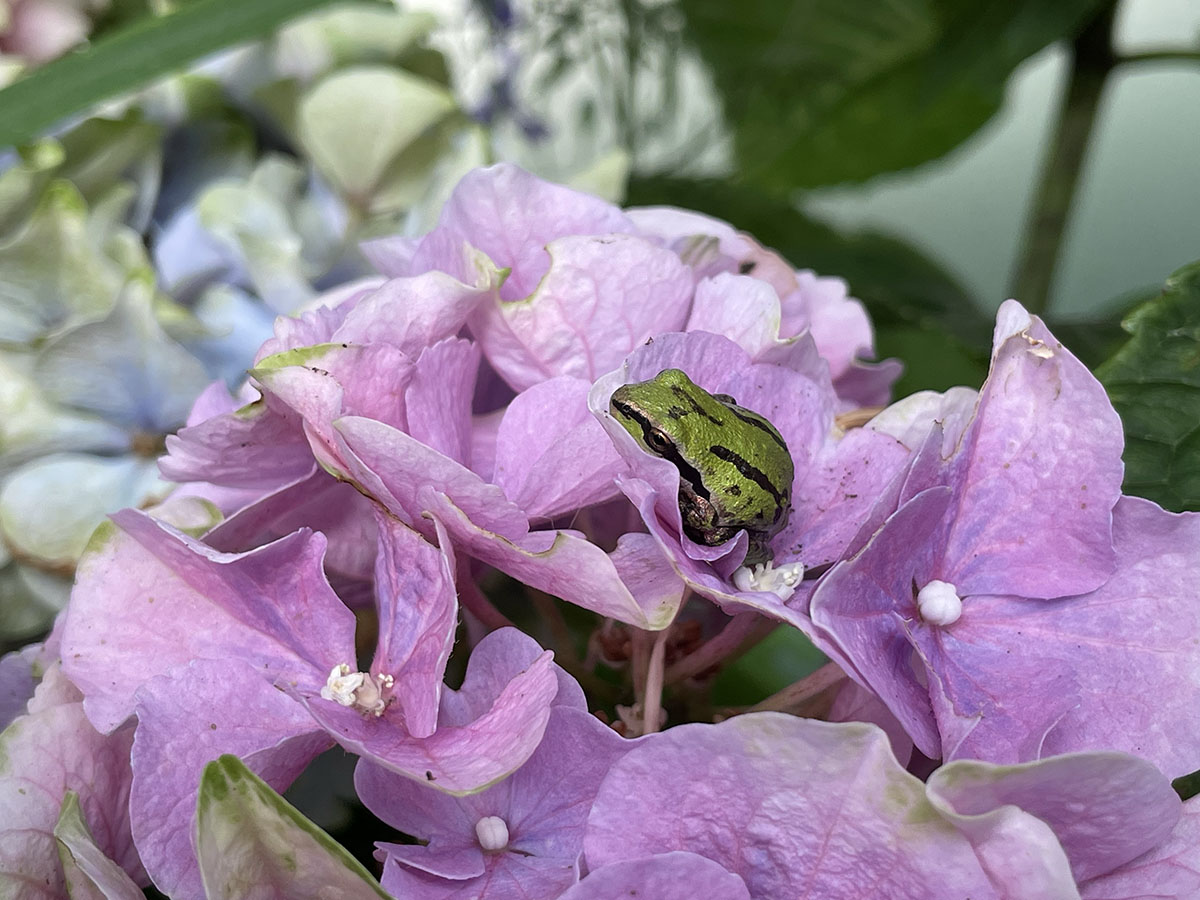UBC officials overseeing repairs of the troubled Webber Lane waterway are ensuring ongoing work will not interfere with the upcoming Pacific tree frog breeding season.
As reported in the February issue of The Campus Resident, after repairs on Mundell Pond were completed late last year, testing showed a significant of water was still leaking in the waterway, which runs in a southward direction though the eastern section of Wesbrook Place.
But despite ongoing testing, the source of the leaks has not been identified.
According to UBC Properties Trust, “the waterway’s underground mechanical system is complex” and “requires detailed multi-step testing of each component.”
Repair work and investigations into the leaks began in 2022 and are continuing, but with the arrival of spring, UBCPT said the work must take into account the impending return of the small and vocal amphibians and adhere to environmental best practices.
As communicated in a late February update on their website, UBCPT said that “a biologist will ensure investigation and repair work does not interfere with the upcoming Pacific tree frog tadpole breeding season. If work is not resolved on time, the BC Wildlife Act will be followed.”
But what exactly is the deal with Pacific tree frogs?
The frogs are on the provincial Yellow List of species managed at the ecosystem level. Because the frogs can live in a variety of habitats, they are not considered at risk; however, they are protected under the British Columbia Wildlife Act.
Early spring marks the breeding season, when the Pacific tree frogs are vocal in the evening, particularly around shallow bodies of water like the Webber Lane waterway and Mundell Pond. The noise they make, called a choral song, is distinctive and can be surprisingly loud. There are fewer frogs than you think – one older frog can sound like several frogs.
Pacific tree frogs can live in all kinds of vegetation near water, and since the sticky pads on their toes allow them to climb, you may find them enjoying the plants on your patio or balcony. The frogs can range in colour from bright green to brown, and individuals can even change colour.
The frogs eat a variety of insects, which helps keep down the mosquito numbers in and around the waterway. Since they are abundant, they also provide an important food source for a variety of animals, including garter snakes, mammals and birds.
Frogs are an important part of biodiversity, and frog numbers can provide information about the health of an environment. BC Frog Watch is a group of researchers who work with the public to collect information about frog numbers.
According to a wildlife officer at the British Columbia Society for the Prevention of Cruelty to Animals who spoke to The Campus Resident, capturing or otherwise interfering with the tadpoles and frogs is prohibited. Catching and releasing tadpoles does have potential for harm to the animals. Small children may accidentally drop or otherwise unintentionally damage tadpoles, so playing with tadpoles or catch and release should be avoided. Listen, but don’t touch!
ROBYN STARKEY IS A WESBROOK PLACE RESIDENT AND A MEMBER OF THE CAMPUS RESIDENT NEWSPAPER EDITORIAL COMMITTEE.
